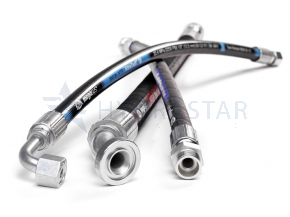All hydraulic systems, from the most complex to the most basic, depend on a small number of core parts that they share in common. By understanding and utilising these ‘building block’ components, design engineers can customise their hydraulic devices to undertake a very wide range of tasks and applications. Read on to find out more about these essential components.
1) Hydraulic Pump
A hydraulic pump is your most basic hydraulic power source. The pump takes in fluid from the tank and exerts it as pressure through hoses to be utilised by other components in the system.
There are three types of pumps you can use for this job: lobe pumps, vane pumps and gear pumps. The most effective types are either gear or vane – both create pressure quickly with huge amounts of power.
2) Selector Valve
A selector valve is a hydraulic device that lets you divert fluid flow from one fluid line to another. You’ll need at least two selector valves for your system to function properly. With two selector valves in place, you’ll be able to provide power to both forward and reverse directions on your hydraulic cylinder or implement.
3) Hydraulic Motor
A hydraulic motor is responsible for converting pressure energy into rotational energy, which then turns wheels or moves machinery parts in a specific direction per the input.
There are two types of motors you can use: AC and DC.
AC motors are used when the speed at which your motor needs to rotate is essential, but not so much how far it travels. An excellent example of an AC motor in action is a drill – it spins fast but doesn’t need to go far before stopping again. DC motors are best for hydraulic systems that move large distances at slow speeds, such as the hydraulic boom on an excavator.
4) Hydraulic Tank
A system without a hydraulic fluid tank isn’t much of a system at all! The pump needs somewhere to put the liquid it’s exerting in order to maintain proper pressure throughout your implement. Keep in mind that the size of your tank directly correlates with how long you’ll be able to use your hydraulic system before needing to add more fluid.
5) Actuating Units
Actuating units, or actuators, are the components that convert hydraulic power into motion. In hydraulic systems, actuators are used to open and close valves, operate hoists and winches, or rotate a wheel or turbine.
Next Steps
Understanding how a hydraulic system works and what parts are included will help you identify which components to order when designing a hydraulic system. Contact Hydrastar today with any questions about our products, services, or other inquiries.



